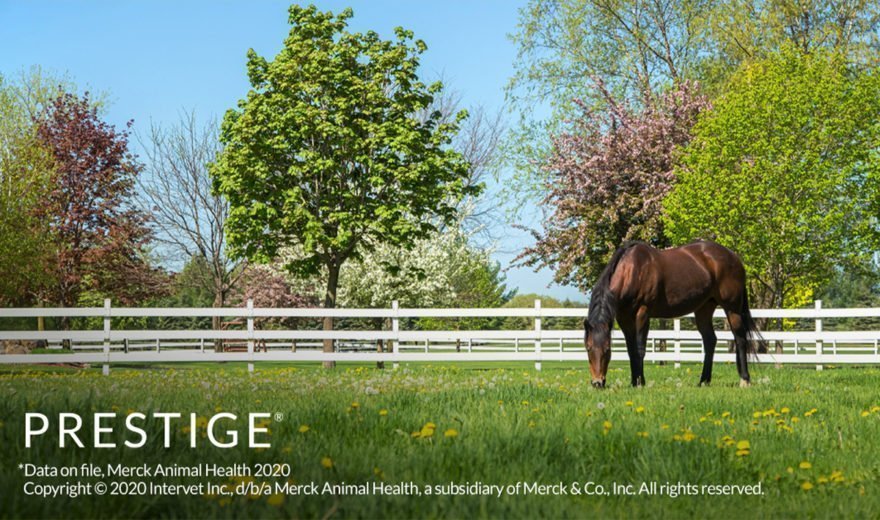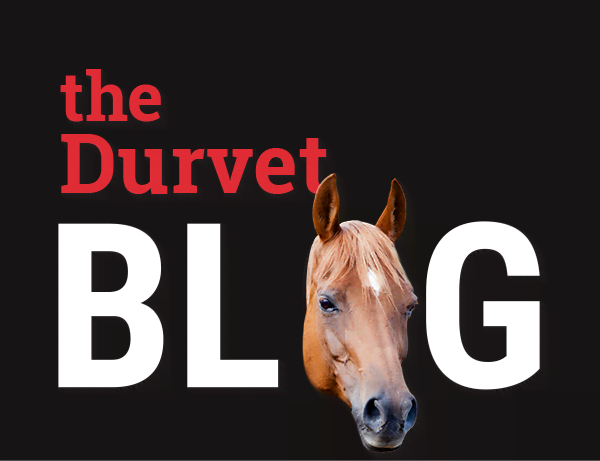
Sponsored Content
Equine influenza virus (EIV) is on the rise. The number of infected horses has been trending upward since 2008, according to data from the Equine Respiratory Biosurveillance Program.¹ But this trend is reversible with a better understanding of what puts horses at risk for EIV and how to best keep them from getting sick. Keep these four keys in mind.
1. Rethink your horse's EIV risk
While there's no magic trick to keep horses from getting EIV, vaccination is the next best thing. Veterinarians recommend including EIV in a horse's vaccination program based on the diseases circulating in the horse's area and on the horse's lifestyle. When thinking about whether a horse is at risk for EIV, consider that:
- EIV spread occurs with or without travel. Even horses who don't leave the farm are at risk of EIV-particularly if there are other horses coming and going.
- EIV affects both young and old horses
2. Practice biosecurity
Similar to social distancing or wearing a mask, you can take physical precautions to help protect your horse against EIV. While vaccination is the foundation of protection, biosecurity measures help control the highly contagious disease.
When you're at home:
- Practice good hygiene and cleanliness, such as regularly washing your hands, cleaning our stalls and washing water sources.
- Isolate new horses and monitor them daily for fever and signs of infectious disease.
- If horses have returned from traveling, separate and monitor them for at least two weeks.
When you and your horse are traveling:
- Minimize nose-to-nose contact with other horses.
- Don't share items, including lead lines, halters, water buckets or tubes of oral medications.
- Regularly clean your tack, equipment and stalls.
- Monitor your horse's temperature daily so you'll know what's "normal." Deviations from normal might signify an infectious illness. Contact your veterinarian if you note a rise in temperature.
- Practice good hand hygiene, washing your hands after handling each horse. (Hand sanitizers work well in the absence of soap and water as long as hands aren't visibly dirty.)
3. Time vaccines for flu season
Like people, horses experience a flu season. Data shows equine flu season extends from December through April.¹ This is typically before horses receive their spring EIV vaccinations and a few months after their fall vaccinations. Receiving an EIV vaccine in February or March rather than later in spring could be much more beneficial for horses. Even a difference of a month or two can make a significant impact.
In addition to timing, the number of vaccinations also plays an important role in protecting horses. Ongoing Biosurveillance Program data shows many horses are under-vaccinated, receiving just one EIV vaccination per year (or less).²
4. Stay on top of evolving virus
Equine flu changes like human flu does; although, at a much slower rate. This is referred to as antigenic drift.
Therefore, it's crucial to use a vaccine that's updated to account for the most recent flu strains. Ongoing monitoring shows Florida '13 is the strain closest to the EIV currently circulating in our horses.³ PRESTIGE® inactivated influenza-containing vaccines from Merck Animal Health are the only EIV vaccines that include the Florida '13 strain. Learn more about the PRESTIGE® line of vaccines.
With these tips, you'll go a long way in helping make sure your horse isn't part of the increase in flu cases. By remembering the EIV risks and choose an EIV vaccine that has changed along with the virus, you'll not only protect your horse but also help prevent large groups of horses from experiencing an EIV outbreak. More healthier horses. Now there's a trend that should continue to grow.
¹Vaala W, Barnett DC, James K, Chappell D, Craig B, Gaughan E, Bain F, Barnum SM, Pusteria N. Prevalence Factors Associated with Equine Influenza Virus Infection in Equids with Upper Respiratory Tract Infection from 2008 to 2019. AAEP Proceedings. 2019 Vol 65.
²Merck Animal Health and University of California, Davis School of Veterinary Medicine (Nicola Pusteria). Infectious Upper Respiratory Disease Surveillance Program. Ongoing research 2008-present.
³Data on file, Merck Animal Health 2020.

 BACK TO MAIN BLOG
BACK TO MAIN BLOG 
Comment